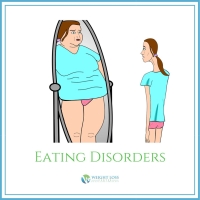Zollinger-Ellison Syndrome
- Health Articles
- Hits: 11537
Zollinger-Ellison syndrome, also known as ZES, is an unusual disorder where there is an increased level of hormone gastrin produced, causing excess hydrochloric acid to be produced in the stomach. These excess acids, in turn, lead to peptic ulcers. A rare disorder causes ulcers and tumors in the pancreas and duodenum. The pancreas is a gland situated at the back of the stomach where enzymes used to break down proteins, fats and carbohydrates are produced, from food and insulin hormones that break down sugar. The duodenum is the first part of the small intestine. This disease can occur at any time, but on average, the age at which it is mostly diagnosed is 50.
Ulcers caused by Zollinger-Ellison syndrome are less responsive to treatment than regular peptic ulcers. It is still unknown as to what causes Zollinger-Ellison syndrome tumors. Patients suffering from Zollinger-Ellison Syndrome may experience severe abdominal pain and diarrhea. The disorder is also suspected in individuals without any symptoms who have stern ulceration of the stomach and small bowel movements especially if they do not respond well to treatment.
Gastrinomas can occur as small, single or multiple tumors. About a third of the patients affected by single gastrinomas malignant tumors, find them commonly spreading to the lymph nodes and liver near the small bowel and pancreas. Twenty five percent of the people suffering from gastrinomas have multiple tumors as a condition known as multiple endocrine neopalsia type 1 (MEN 1), in addition to tumors in the pancreas, patients suffering from MEN 1 have tumors in their pituitary and parathyroid glands. In some cases, tumors in MEN 1 are malignant and in others benign. Malignant or benign tumors of ninendocrine tissues sometimes occur as components of some of the tumor syndromes.
Zollinger-Ellison Syndrome Symptoms
The symptoms of Zollinger-Ellison syndrome include bleeding, burning sensation, weight loss, weakness, heartburn, fatigue, diarrhea, vomiting and nausea. Bleeding in the digestive tract is a dangerous symptom. Physicians diagnose Zollinger-Ellison Syndrome through various blood tests for measuring levels of gastric and gastrin acids secretion. Any signs of ulcers can be checked through doing an endoscope, which involves checking the stomach’s lining and duodenum by use of a lighted tube. Some patients may experience pain between the navel and breastbone. Some pain may develop immediately after eating; this pain is normally relieved by taking antacids. Other symptoms are pain that travels from the abdomen to the throat, foul smelling stool and dark, red blood spots in the vomit.
Zollinger-Ellison Syndrome Treatment
The treatment available for Zollinger-Ellison Syndrome is prescription to reduce acid formation in the stomach. Proton pump inhibitors that can suppress acid production as well as promote healing are a priority; they include, omeprazole, pantoprazole, esomeprazole, rabeprazole, and lansoprazole. H-2 blockers such as ranitidine famotidine and cimetidine may also be used. Other treatment options are surgery for peptic ulcers and tumor removals from the pancreas and duodenum. Patients who have undergone Zollinger-Ellison Syndrome treatment should be closely monitored through their recovery process in case there is a recurrence of tumors.














